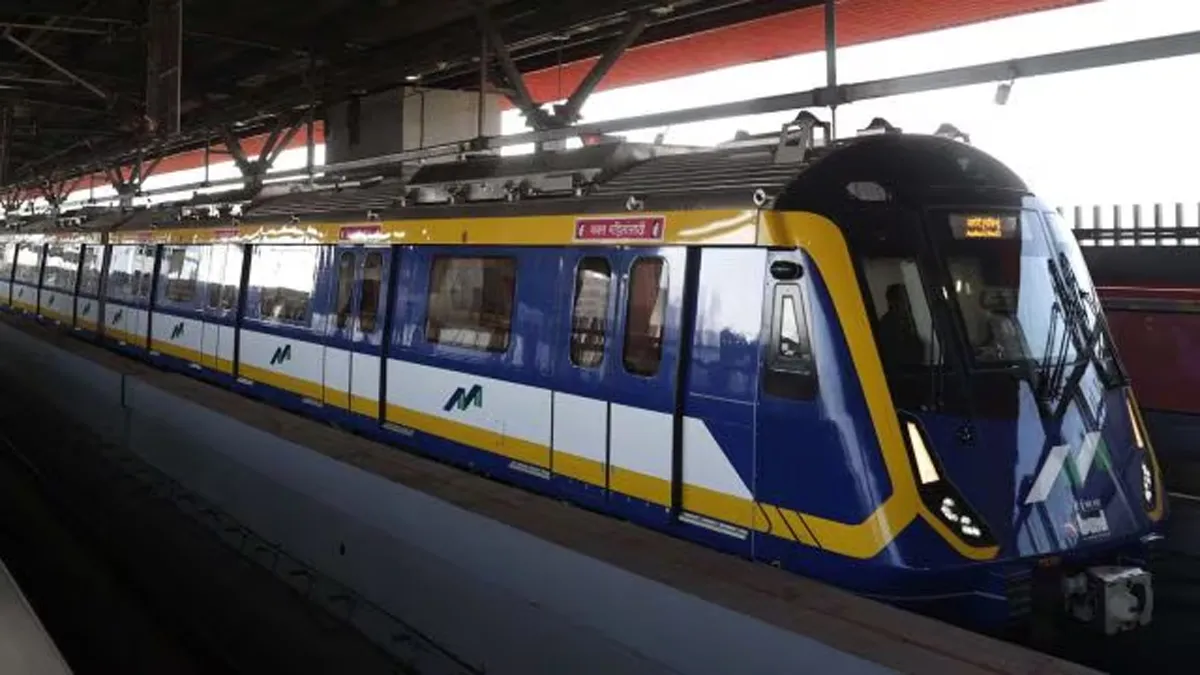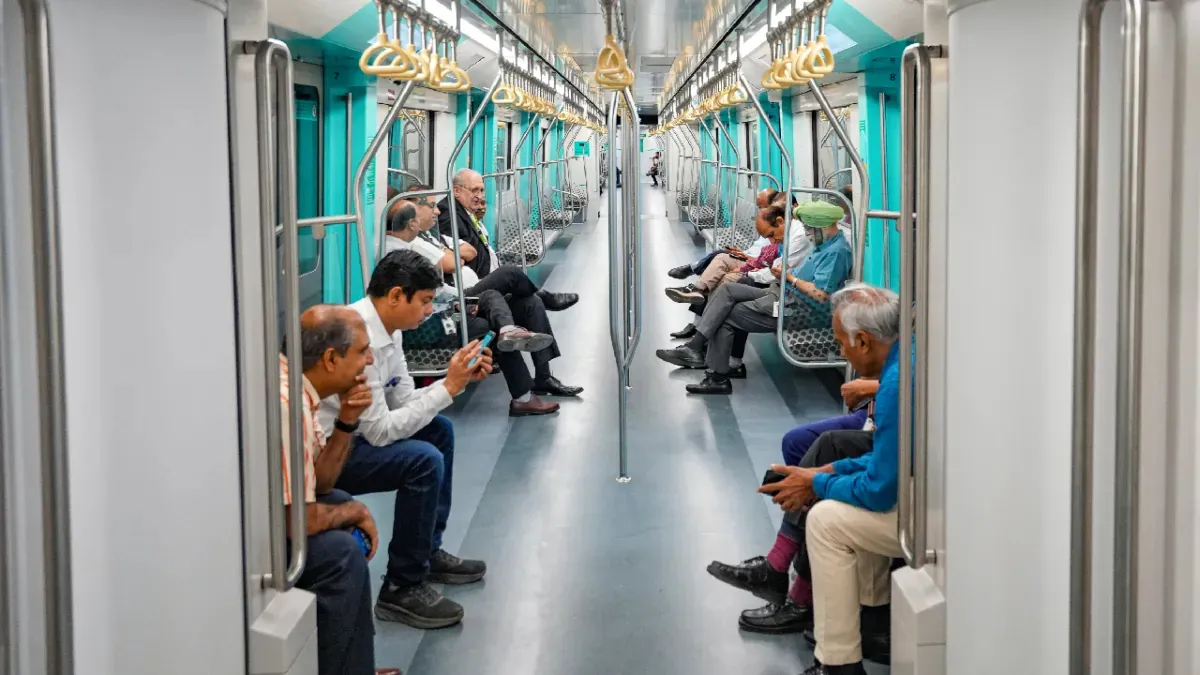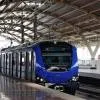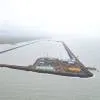Users of tippers and dump trucks in India are gradually adopting high-capacity, technology-rich vehicles. Know more!
01 Sep 2018
13 Min Read
CW Staff
Medium and heavy commercial tipper providers sold 60,000 units last year when the market logged 6.5 per cent YoY growth, shares <span style="font-weight: bold;">Rajesh Kaul, Product Line Head, M&HCV, CVBU, Tata Motors.</span>
<p></p>
<p> Strong growth has continued into the current year with the first quarter seeing more than double the previous demand, he adds. </p>
<p> Backed by strong fundamentals and an overall positive macro outlook, the volume of tippers sold has significantly increased and this class now contributes 30 per cent to the overall heavy commercial vehicles industry, notes <span style="font-weight: bold;">Rama Rao AS, Executive Vice President, Sales, Marketing & Aftermarket-HD Trucks, VE Commercial Vehicles.</span></p>
<p>'Overall, we see a strong rebound in the Indian commercial vehicle market after the temporary distortions brought in by demonetisation, the transition to Bharat Stage (BS) IV (fuel norms) and the introduction of GST,' says <span style="font-weight: bold;">Rajaram Krishnamurthy, Vice President-Marketing & Sales, Daimler India Commercial Vehicles.</span> </p>
<p> <span style="font-weight: bold;">Current drivers</span><br />
Construction is currently the biggest driver of tipper sales with 70 per cent of sales coming from the sector, says Rama Rao. 'In this segment, most tippers are deployed for the transportation of aggregates from stone crushers to construction sites while earthworks, sand transportation and the movement of RMC are some other applications.'</p>
<p> 'Blue metal (crushed stone) transportation is the largest segment for tippers today on the back of growing road development projects,' agrees Kaul. </p>
<p> 'The construction of smart cities and SEZ projects and the reclamation of mining in select states are other drivers.'</p>
<p> Coal mining contributes to around 15-20 per cent of sales of dump trucks, says Rama Rao. </p>
<p> 'Increased demand for coal has increased the need to transport coal from the in-pit to the surface or plant and, in turn, increased dependency on dump trucks and tippers,' observes <span style="font-weight: bold;">Samaresh Mitra, National Sales Head-OE, Komatsu Mining Corp Group, Joy Global (India).</span> 'Conveyor systems, the alternative transportation method, have yet to gain popularity in India as system breakdowns completely cut off the coal evacuation system.'</p>
<p> 'Coal mines are the largest users of rigid body dump trucks because, by volume, coal is the most mined mineral and coal mines go deeper than other mineral and metal mines,' says <span style="font-weight: bold;">Ashim Kumar Mukherjee, Technical Advisor, Enrika.</span></p>
<p><span style="font-weight: bold;"> Future drivers</span><br />
With many road projects going ahead, demand for trucks for the surface transportation of aggregates will get a boost, says Kaul. 'Higher surface movement means higher migration to bigger vehicles.'</p>
<p> In mining, 'primary minerals such as coal, iron ore, bauxite and limestone will continue to represent most of the equipment purchase - transport and otherwise,' opines Rama Rao. 'Government plans to double coal production by 2019-20 and revive some public-sector cement plants to supplement demand for cement will also drive demand.' </p>
<p> 'Better utilisation of coal-based thermal power plants is likely to improve the need for transportation of coal via road but other mining segments have seen slow growth,' adds Kaul.</p>
<p><span style="font-weight: bold;">Choosing a truck</span><br />
The truck preference of buyers depends on the application, the geography (terrain) where it will ply and the nature of work, says Kaul, explaining: 'Shorter vehicles offering better manoeuvrability are the preferred choice for hilly terrain and mining applications. Longer vehicles with configurations of 8 x 2 and 10 x 2 are deployed for surface transport applications. The longest of all tip trailers offering larger load bodies and higher carrying capacities are being used for long leads on broad national highways.'</p>
<p> 'Users invest in dump trucks or tippers depending on the quantity and scope of work they have in hand,' says <span style="font-weight: bold;">Ranjit Ravindran, Business Head, Mining, Mining & Construction Equipment Division, Voltas.</span> 'Typically, they prefer tippers where the quantum of earth or ore removal is likely to take three to four years, while dump trucks make sense for large-scale mining spanning a decade or more. The quantity of the reserve must justify the investment in the dump truck.'</p>
<p> Typically, customers choose a dump truck or tipper based on the capacity of the bucket of the loading equipment, which can be a rope shovel, hydraulic excavator or wheel loader, says Mitra. </p>
<p> 'For optimum productivity, the industry standard is to fill the haulage equipment in four passes of the loading equipment.' </p>
<p> <span style="font-weight: bold;">Preferred trucks</span><br />
Indian users prefer 30-35 tonne payload tippers and 35-100 tonne payload rigid dump trucks, says Mukherjee.</p>
<p>In the off-highway segment, 60 tonne and 100 tonne dump trucks are most preferred in India, says Ravindran. 'Fewer users such as Coal India, NTPC, Reliance and Hindustan Zinc have extensive operations that justify an investment in ultra large-sized dump trucks of 240 tonne capacity.'</p>
<p>'Coal India and its subsidiaries extensively deploy 65 tonne and 100 tonne dump trucks, the most popular class in India, while South Eastern Coalfields and Reliance deploy 240 tonne dump trucks in combination with large electric rope shovels of 42 cu m capacity,' shares Mitra. 'Private operators getting into mining are making tippers more popular for coal evacuation.'</p>
<p>That said, a shift in demand towards higher capacity trucks seems to be underway. Mitra notes a surge in demand for 150 tonne, 190 tonne and 240 tonne dump trucks, which he ascribes to the increasing stripping ratio in mines and more overburden having to be handled to expose coal, as a result of which, coal benches are becoming taller. </p>
<p>This leads to deployment of higher capacity loading equipment, thereby increasing the capacity of the haulage equipment. </p>
<p>With recent mining leases period going up to 25-30 years in some cases, Mitra is hopeful that the capex on higher capacity equipment would be justified and these would be deployed more frequently. 'Large capacity equipment would substantially increase productivity and contribute to safer operations by reducing the number of mobile equipment in the mines.'</p>
<p> <span style="font-weight: bold;">Rigid vs articulated</span><br />
Rigid dump trucks account for 90 per cent of the sales of dump trucks for construction and mining because they are well suited to applications where one needs a tight turning radius for better manoeuvrability, says Rama Rao. 'Besides, rigid tippers with bogie suspensions are suitable for uneven terrain and gradients that vehicles deployed for such applications have to negotiate.'</p>
<p>While 6 x 4 tippers have captured almost three-fourth of the total sales of rigid dump trucks, with the implementation of overload restrictions in some areas, Rama Rao says demand has recently shown signs of shifting to higher GVW 8 x 4 tippers and 10 x 4/10 x 2 tippers.</p>
<p>'The Indian market for dump trucks is skewed towards rigid body trucks,' agrees Ravindran. Essentially, 'few mines such as those in Goa have the sort of slippery, narrow terrain that justifies the use of articulated dumpers.'</p>
<p>Mukherjee explains the technological advantage of tippers and dump trucks over articulated trucks: 'Articulated trucks have payloads within 40 tonne while today's tippers have a fairly high payload; 30-36 tonne vehicles are common. With double differentials, the gradeability of higher payload tippers matches or exceeds that of articulated trucks of similar payload capacity. Also, 12-wheeled tippers match or exceed the floatation of articulated trucks. And, the volumetric body capacity of tippers can be increased by increasing the dump body wall heights, facilitating the utilisation of full payload capacity even with lighter density cargoes. When demand is slack, tippers can also be used as normal transport trucks. Rigid dump trucks can withstand more torsional and bending loads and heavy-duty operations than articulated trucks and have a higher payload; besides, their rear-wheel drive makes them more suitable for maintained haul road.'</p>
<p>However, of late, Rama Rao says transporters moving minerals and building material over longer hauls have been shifting to articulated tip trailers.</p>
<p>Kaul puts the steady shift towards articulated tip trailers in surface transportation down to overload restrictions. He expects a faster shift to higher tonnage points in interstate movements. </p>
<p>If these restrictions are implemented stringently across India, the shift will speed up also in intrastate movement.</p>
<p> <span style="font-weight: bold;">Performance first</span><br />
'We see a major shift in customer demand across the industry, from cost-consciousness to a performance-first mindset,' says Krishnamurthy. 'Behind this is greater understanding of customers that price is only part of the equation and performance is a major portion of the overall value proposition - durability, fuel consumption, service cost, etc.'</p>
<p>Customers desire performance-enhancing features that will add to safety and provide better operating efficiency in terms of payloads, carrying strength, mileage, easy serviceability and lower maintenance, agrees Kaul. </p>
<p>To this end, Tata Motors has improved tipping cycles and turnaround times to increase users' return on investment, and has introduced air-conditioning and blower options in its Signa range for driver comfort and higher productivity. Now, with the government notification of increased axle loads, Tata Motors is all set to upgrade its 16 tonne to 49 tonne tipper range, spanning the premium Prima, Signa and conventional models, as per the new norms. </p>
<p>'In dumpers, a feature commonly used is the operator independent truck dispatch system (OITDS), which facilitates the remote monitoring of equipment and prognostics fleet management, reducing downtime substantially,' says Mitra.</p>
<p>Rama Rao believes the focus on infrastructure with strict governance around project timelines bodes well for heavy-duty trucks and tippers featuring the latest technology to meet the need for higher productivity. 'Progressive companies are realising the benefit of deploying better power-to-weight ratio trucks offering latest technologies such as automatic transmission, telematics and advance safety systems. Customers are getting into data analytics and utilising advance telematics. </p>
<p>Eicher Pro series tipper trucks offer the right balance of power, efficiency and safety with advance telematics and next-gen features like Eicher Live and fuel coaching.' Another factor that may help raise the bar, both in terms of investment and technology applied in Indian mines, is the opening up of commercial mining, observes Ravindran. With this move, many global mine developers and operators (MDOs) are likely to bid for commercial mining projects, he explains. 'Recently, <span style="font-weight: bold;">Anil Agarwal of the Vedanta Group</span> spoke about investing heavily in the mining sector in India. Global MDOs have both the resources and capability to invest and operate at a large scale, which justifies mechanisation, while conventional Indian companies tend to buy the same sort of equipment they have been using for the past few decades.'</p>
<p> <span style="font-weight: bold;">Must-have Features in a Tipper<br />
Rama Rao AS, Executive Vice President, Sales, Marketing & Aftermarket-HD Trucks, VE Commercial Vehicles,</span> lists features you should look for in a tipper:<br />
An engine delivering high power and torque for better productivity.<br />
High reliability and durability of aggregates, which result in higher uptime.<br />
Bogie suspension, a differential lock, a comfortable cabin.<br />
Compliance from Directorate General of Mines Safety for tippers intended for mining applications.<br />
A box body fitted with a tail gate if you propose to use the tipper for the transportation of materials and minerals.<br />
A rock body tipper, with a specially reinforced sandwich floor and rock breakers to withstand the impact of large stones and boulders, if you propose to use it for off-road applications.</p>
<p> <span style="font-weight: bold;">Must-have Tipper Safety Devices</span><br />
Rajaram Krishnamurthy, Vice President-Marketing & Sales, Daimler India Commercial Vehicles, explains how the array of safety and comfort features installed on BharatBenz tippers contributes to safety.<br />
Heavy-duty braking system with wider and thicker brake lining: Facilitates long-lasting, quick braking response.<br />
Anti-roll bars on front and rear axles: Ensure better grip and stability of the vehicle. Crash-tested steel cabin that meets international norms, side impact beam and three-piece steel bumper: Strengthens the cabin.<br />
Fully sealed, ergonomically designed extended day cabin with provision for sleeper berth: Cuts off vehicle noise and reduces driver fatigue.<br />
Parabolic suspension with wider mounting span: Improves drive quality and reduces driver fatigue.<br />
Three-way adjustable driver seat with a tiltable and telescopic steering and a twin co-driver seat: Reduces driver fatigue, improves productivity.<br />
Improved ventilation with blowers and optional air-conditioning: Reduces driver fatigue, improves productivity.</p>
<p> <span style="font-weight: bold;">Box vs Scoop Tippers</span><br />
When does it make sense to use box tippers and when do scoop tippers suit operations? <span style="font-weight: bold;">Rajesh Kaul, Product Line Head, M&HCV, CVBU, Tata Motors,</span> explains. 'Tippers with a box-like rectangular shape with an openable tail gate for the discharge of materials are widely used in longer leads. The gate is closed when the vehicle is moving to protect against material (sand, blue metal, ore) spillage. Tippers with a scoop-shaped rear lack a tail gate; they just have curvature like a scoop. Such bodies are widely used in mining applications where the leads are small and the vehicle will have to tip loads many times over the course of a day; hence, faster discharge is needed. Scoop-shaped tippers are helpful for speedy earthmoving and the transfer of heavy stone and mud to small distances.'</p>
<p> <span style="font-weight: bold;">- Charu Bahri</span></p>


















